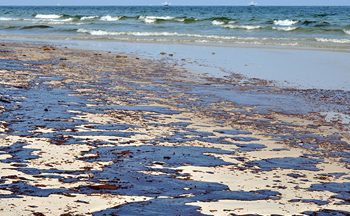California Pipelines Face New Hurdles As the State Adopts Final Rules to Protect its Coastline
October 26, 2020
The California Office of the State Fire Marshal (“OSFM”) finalized its regulations implementing Best Available Technology (“BAT”) requirements for hazardous liquid pipelines, effective October 1, 2020. The proposed regulations, discussed in more detail in three previous alerts (October 28, 2019, October 3, 2019 and March 11, 2019), implement AB 864, which became law in 2015 and requires installation of BAT on new and existing intrastate hazardous liquid pipelines near environmentally and ecologically sensitive areas (“EESA”) in the Coastal Zone. BAT must provide the greatest degree of protection by limiting the quantity of release in the event of a spill, taking into consideration whether technology currently in use is sufficient or there is pipeline technology that could be purchased anywhere in the world should be installed to achieve BAT.
The final regulations also set compliance deadlines for pipeline operators. By May 1, 2021, pipeline operators may submit a request for exemption for any pipeline otherwise subject to the regulations from which the operator can demonstrate that a spill would not impact EESA in the Coastal Zone. For nonexempt pipelines, operators must submit a risk analysis and BAT implementation plan by October 1, 2021. The risk analysis and BAT evaluation requires a detailed review of the consequences of potential releases and an analysis of the latest spill detection and prevention technology. OSFM is required to determine if the risk analysis is adequate and complies with the regulation within 90 days, unless it shows good cause for additional time to review.
Within 60 days of approval of the risk analysis, operators must submit a detailed supplemental implementation plan that includes a timetable for installation of BAT and a startup plan. Installation of BAT must be completed on existing pipelines by April 1, 2023. The regulations allow OSFM to commence enforcement against operators who do not complete BAT installation by the April 1, 2023 deadline, unless the operator demonstrates good cause for delay.
Pipeline operators will face significant uncertainties and challenges over the next few years as these regulations are implemented. Industry comments indicate several areas of ambiguity remain that will only be determined as operators submit requests for exemption, risk analyses and BAT implementation plans for OSFM approval. For example, which pipelines are located “near” an EESA in the coastal zone and, thus, subject to the BAT requirement remains to be seen. Also, how OSFM will apply the definition of BAT, which includes any technology “that could be purchased anywhere in the world.” Industry has also voiced concerns regarding the cost of compliance with the regulation and whether the BAT implementation deadline provides sufficient time for OSFM review, obtaining local permits and approvals, as well as design and construction.
The regulations commence at 19 California Code of Regulations section 2100. Rulemaking materials are available here under (PLS) Intrastate Hazardous Liquid Pipelines – Best Available Technologies AB864.

